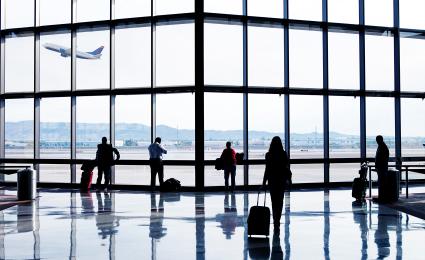Ground-level decarbonization efforts offer promising avenues to reduce
airport platforms’ emissions.
In the pursuit of decarbonization in the aviation industry, a multitude
of groundbreaking solutions are emerging to address carbon
emissions, both during flight and on the ground. While considerable
attention has been devoted to reducing emissions en route, recent
initiatives are targeting ground operations, also benefiting to local
communities and airport personnel.
Taxiing emissions can be a significant contributor to airports’ carbon footprint, highlighting the importance of ground-level decarbonization.
Aviation accounts for c. 3% of global energy-related CO2 emissions, and have grown in the last decades due to traffic increase although unit emissions per PAX tend to decrease. Among these 3%, approximately 10-15 % are attributed to airport platforms. As international travel demand recovers, following the Covid-19 pandemic, many measures are required to curb the growth of carbon emissions, among which groundlevel decarbonization initiatives. They encompass a diverse array of strategies, including the transition to sustainable power sources for Ground Support Equipment (GSE) and the implementation of innovative solutions to minimize carbon footprints.
Among these strategies, the greening of GSE stands out as a pivotal step in the journey towards sustainable aviation. This transition, from reliance on diesel power to embracing electric or hydrogen-based alternatives, has been underway for some time, starting with baggage carts and gradually extending to heavier equipment such as high loaders, transporters, and pushback tractors. By reducing emissions generated during ground operations, airports can significantly mitigate their environmental impact and contribute to broader sustainability goals.
Another key aspect of ground-level decarbonization revolves around optimizing onboard systems to minimize energy consumption. By limiting the usage of onboard air conditioning and electric supply through auxiliary power units (APUs), airports can reduce emissions associated with aircraft standing, while improving overall operational efficiency and reducing noise. Furthermore, efforts are underway to connect Pre-Conditioned Air (PCA) directly from airport infrastructure to aircraft, eliminating the need for ACU or onboard air conditioning during ground operations. Similarly, connecting ground power sources, such as 400Hz or electrical Ground Power Units (e-GPUs), further reduces emissions by eliminating the need for APUs while parked at gates. However, such initiatives need strict processes to be established and applied by stakeholders – airports, airlines, ground handlers and OEMs - in order to ensure alternative measures to APU are properly used.
Emerging as a particularly promising solution, "green taxiing" initiatives are gaining traction in the aviation industry. These initiatives involve the deployment of hybrid, electric, and potentially hydrogen-powered vehicles capable of towing aircraft from gates to runways, thereby minimizing engine use during taxiing – as aircraft are then taxied with engines off. These solutions are being developed and rolled-out for both narrow-body or and wide-body aircraft.
![{[downloads[language].preview]}](https://www.rolandberger.com/publications/publication_image/MMP_TaxiBot_Website_ST_BR23_download_preview-2.jpg)







_person_144.png?v=770441)



